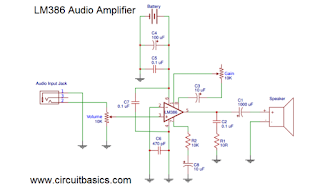Posted on March 26, 2018, was an article called "The Reality of Amateur Radio 2018." The article was penned by Chris G7DDN. Here is the link to the article.
Here are some quotes from the article:
"The reality though for perhaps the majority of Hams on a day-to-day basis in 2018 is not so rosy."
The author goes on to describe how for most hams live with so much man-made interference that they live with constant S9 or above S9 noise on some bands.
"Then we have the Home Owner Associations coupled with the newer restrictive covenants that stop us putting up antennas, whether it be an 80 metre long wire or a 60 foot high tower. We have neighbours complaining about eyesores and about interference from “that Radio Ham” up the road."
Or this quote:
"Then we struggle with the fact that we are perceived, rightly or wrongly, as being old-fashioned, fuddy-duddy and out-of-touch."
The author does go on to seem to make an argument for the acceptance of internet-based ham radio as the possible salvation for hams that are faced with difficult antenna rules and local interfering noise.
So let's talk about that.
I do not believe that life for the "majority" of hams is not good. I do believe that we make choices and decisions that are trade-offs based on our life circumstances. For example, the XYL wants to live in a certain neighborhood. That neighborhood may have lot sizes that are not conducive to putting up an 80 foot tower. So we make trade-offs. We find other HF antennas that will work with what we have, or we make the decision to NOT move into that neighborhood. Decisions are usually based on compromise, especially when it comes to family, and most hams have family to consider.
That does not make the majority of hams SAD. It is a choice to accept what is available, or to change your circumstances.
In my case, I have room for an 80/40 inverted vee (shortened on 80), and a 4 element tri-band yagi, and a vertical. Not too bad, and I also have satellite gear and antennas. Is this ideal? No, not by any means is it my dream station, however, it works and I also get to live in the neighborhood that I like. Of course, I told the XYL that when we move, it will be to a place where conditions will be more ideal. A place with room for a 160m antenna and maybe a taller tower or even two. That is also a choice.
Let me skip to the third quote above wherein we hams are considered old-fashioned "fuddy-duddy and out-of-touch." To quote Clark Gable, "frankly my dear, I don't give a damn."
There is no way in H**L that I am going to care whether some guy who has the technical knowledge of a gnat cares whether the guy down the street is a nerd. Nerds rule. Therefore, I do not consider morse code or talking on HF to be old-fashioned at all. I do consider these pursuits as manifestations of excellence in classic communications. To make an analogy, should we ditch Mozart and Mendelssohn for 2018 hip-hop music because the classics are "fuddy-duddy?" Yeah, well I don't think so. Hip - hop makes me want to pull my ears off.
Being apologetic for practicing a magnificent art called amateur radio is just dumb.
The idea that homeowners associations are impinging on our hobby is absolutely true. However, I have the freedom of not moving into that place. Like I mentioned above, hams need to prioritize, and I want my freedom to put up whatever antenna I want.
Finally, embracing internet-based radio is a lovely idea, but it isn't ham radio in my opinion. Here's why. Radio is by definition WIRELESS. Don't get me wrong; as I write this it is somewhat lightning and thunder here in Israel, and I have my HF stuff unplugged. So to get on D-star or Allstar or DMR is a nice alternative to HF on a day like today...but it isn't wireless communications. I don't keep a log of my D-star contacts unless I met someone interesting and I will maybe want to contact him by email in the future to make a sked to work him on HF or VHF, or UHF, or Satellite.
The thing is, I don't want my amateur radio to be dependent on an infrastructure that is run by Google or Oracle or whoever else is responsible for the backbone of the internet. If I have to, I can run my rigs off a battery and talk to my ham friends in the UK or Japan or the USA with no strings attached.
We hams need to preserve that because it is who we are and where we come from. The internet is a plaything, but wireless ham radio is the real deal.
73 Mark 4x1ks


























